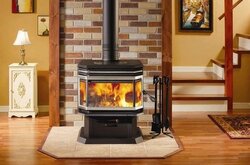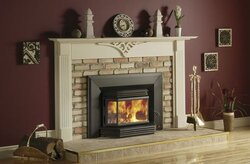VCBurner said:
BeGreen said:
VCBurner said:
I am a little disappointed at how one sided the forum has been on this subject. I hope we haven't just run someone out of town because of the color of his/her horse. I'm not familiar with all the rules and regulations of advertizing products on site, but I'm sure the grate that company sells would not ever be able to compete with any wood stove. Even my old antique cast iron camp stove from 1936. No offense to anyone.
The forum is not represented by this one thread. I'm just stating my opinion that in my experience fireplaces may be romantic, but they are a poor source of heat given the alternatives. With a a modern ZC, high-efficiency fireplace or an insert one can have the best of both worlds
I don't want to shut off the dialog. You are equally entitled to your opinion, as are all, so I'll drop out now and let others have their say.
I value your opinion BeGreen and I feel the same way about fireplaces being poor souces of heat compared to others. I don't personally feel like I wasn't allowed to share my opinion. In fact different opinions are what make this forum a great source. I still consider myself lucky to have found this place and thankfull for the enrichment it brings.
Keep up the good work,
Chris
+1
In particular, I would love to get some input on the question: what really makes a fireplace a fireplace, as opposed to an insertable wood stove with a big view window?
I think of this as not just semantics (in which I have limited interest) but rather as a roadmap for further evolution and development of fireplaces. I think the first question to answer is: what do people expect/hope TODAY when they decide to install a
fireplace instead of a wood stove. Ambiance? The comfort of radiant heat? Connecting with old memories & traditions? Lower cost (stove installation & maintenance too expensive)? ________ (just fill in the blanks)? In my own mind, what sets fireplaces apart from stoves are ambiance, radiant heat and tradition.
Yes, I know that stoves have their own rich tradition and whenever I see an old fashioned German or Dutch tiled stove, or one of the ornate multi-ring kitchen stoves, memories stir (although I DO try to block out the memories of yak dung-fired stoves in the Himalayas) . This is definitely not meant as a tirade-of-sorts against wood stoves!
However, I have sat around campfires in different parts of the world, either because I was a kid camping with my parents or boyscout troupe, a parent or grandparent camping with my (grand)kids, a cruiser joining a beach potluck in the Pacific or a welcome guest in some far-off jungle village where people did not even have stoves. So, whenever I sit in front of a nice roaring fireplace I feel a different type of connectedness, much more adventurous and atavistic, than when I put my feet up in front of a stove.
So, as we move towards more efficient fireplaces, in order to be kind to our body, environment, purse, you name it, we need to be very, very careful not to throw the child away with the bathwater, so to say.
Again, I would love to hear other member's take on the different ways they experience fireplaces and stoves.
Henk






 )
)